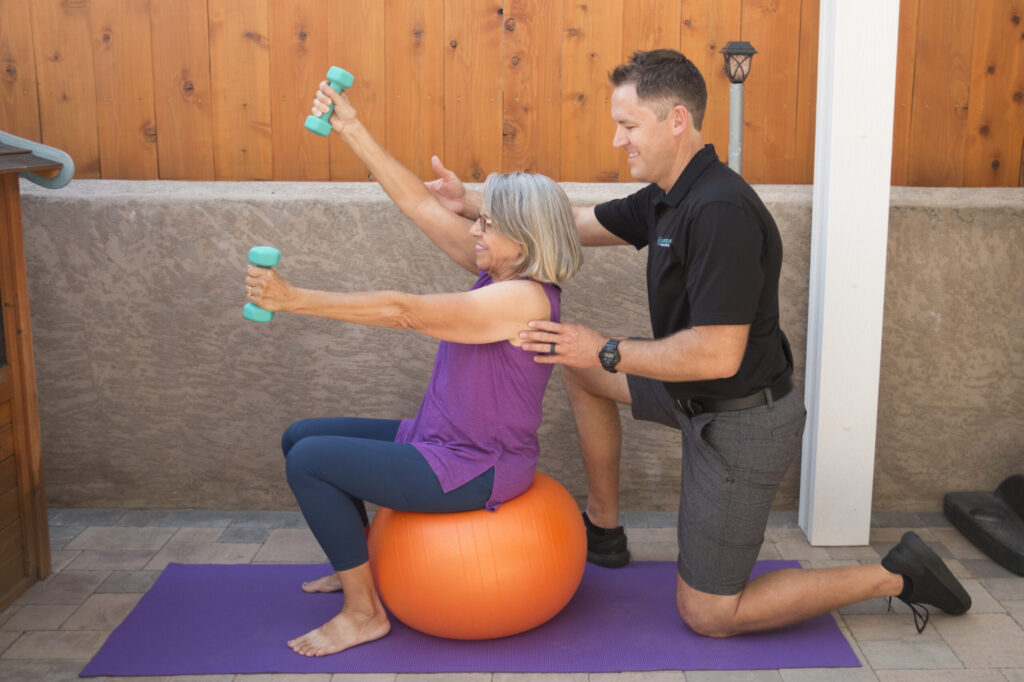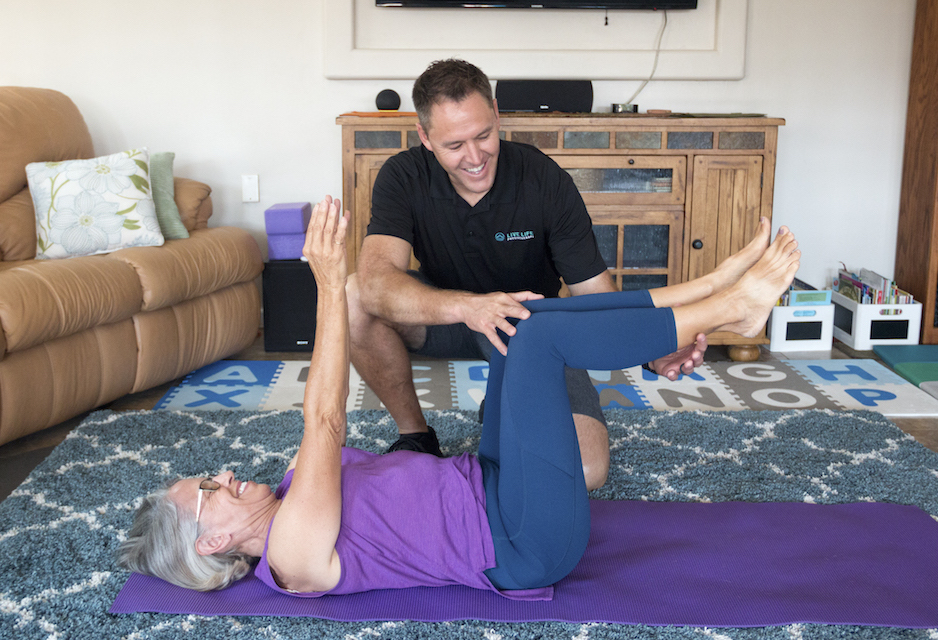Strokes or Cerebral Vascular Accidents (CVAs) are different depending on the type, location, and duration of the stroke. The duration is why it is so important to get someone suspected of having a stroke immediate medical attention and thus the importance of keeping F.A.S.T in mind.
What Does the Location Have To Do With It?
Our brain is organized into different regions that “control” different aspects of our body. The location of the clot or hemorrhage will affect the functions of the area that looses appropriate blood supply. If that area is in charge of controlling your hand or your arm, then you will see a lack of function of those regions. It can also lead to areas that affect vision, speech, and executive functions.
Is It All About a Loss of Strength?
When thinking about what strokes do to our arms and legs, a lose of strength is usually what first comes to mind, however, there is a lot more to consider. Sensation, proprioception, and perception can also affect arms and legs. This is key in how people start to function after a stroke.
What Toddlers Can Teach Us About a Stroke
A toddler’s life is all about exploration. In this exploration, the toddler starts by experimenting with many different ways of moving, constantly making small adjustments and honing in on skills like walking. When they first start, a toddler constrains their body and environment eventually branching out into more complex tasks as their balance, skill, and confidence improve. Often overlooked is just how much time is put into acquiring these skills, but they are constantly moving and challenging themselves to organize their movements into successful patterns. After a stroke, the constraints are different than before. The strength, sensation, proprioception, and perception are different. Based on the severity, the person must now work to develop new motor plans to most effectively navigate and interact with their environment. This often times leads to braces and outside assistance (ie. a walker).
The Knee
Do you remember when you were a kid and someone came up and tapped the back of your knee, your knee buckled, and you almost fell? Well, the reason that happens is that in standing, your quad muscle doesn’t really have to do much to keep yourself upright, so when someone comes and taps the back of your knee, all the sudden your quad has to “catch” you. The time it takes to catch yourself is your reflex, just like when the doctor taps your knee. Imagine if you felt like that was going to happen every time you took a step. When someone has impaired sensation or perception of their leg, they aren’t sure if their leg will hold them, so what do they do? What we commonly see in a physical therapy clinic is that people tend to hyperextend their knee which gives them rigid or passive support as they walk on that leg or they may keep that knee really bent so that they feel their leg muscles supporting them.
What Can Physical Therapy Do?
A skilled physical therapist can break down what patterns are being used and help a person explore their new internal environment to challenge their perceptions and skill of what is possible. Similar to a toddler learning to walk, it takes a lot of repetition! A few key differences are:
- When a toddler “fails” they fall a foot to the ground and land on a nice soft diaper compared to grown adult falling a few feet with the potential of serious injury.
- A toddler is starting from scratch. They do not feel like they have “lost” a skill or something doesn’t work like it used to.
- A person who has had a stroke may also have cognitive impairments that challenge their ability to plan and organize while learning a new skill.
For these reasons, along with the repetition required, can make rehab after a stroke a daunting task, but a task very much worth the work in the end!
Stroke and Rehabilitation
As always in healthcare, people have to advocate for themselves or when unable, have a family/friend advocate for them. At Live Life Physiotherapy, we have seen and heard from clients’ time in the healthcare system. Unfortunately, there are many factors that can limit the attention that a client receives in a busy hospital, post acute care rehabilitation, home health, and outpatient rehabilitation setting.
A client comes to mind that was in the hospital where he was rarely worked with and was limited to sitting up at the edge of the bed despite being able to walk with a walker. When he and his wife described his time in the hospital and home health experience it sounded a lot like he was being given a few general exercises and then was supervised in performing these low level exercises. Months after the stroke, we were finally able to start skill acquisition and balance training to increase his functional independence and safety when walking around his house.
The issue is that the focus is often not on skill acquisition. It is like telling a toddler to perform some seated leg kicks to train them how to walk! Toddlers inherently explore their environment. People after a stroke oftentimes are given a wheelchair or maybe a walker to rely on, limiting their ability to explore their environment and learn new skills. In combination with their fear of falling, many times they are left with unrecognized recovery potential.
What Can You Do About It?
Interview your rehabilitation team before hiring them. That’s right, despite the suggestions from your insurance company, most insurance plans do allow for some autonomy in choosing your rehabilitation team. You can also explore potential Out of Network or cash pay options. Remember, stroke rehabilitation is a long term commitment, make sure your team shares your commitment and drive to improve so you can Live Your Best Life!
Conclusion
Regardless of the stroke location or severity, a physical therapist will be an integral component to your recovery. In our current healthcare system, you need to be assertive and proactive. Establish a relationship with a physical therapist to make sure you are doing everything you can to optimize your recovery. If it is a burden to get to an outpatient clinic, find a mobile physical therapist that can come to your house or office.
About Live Life Physiotherapy
At Live Life Physiotherapy, we are invested in your long game. We offer coaching packages to help with accountability and progress towards your goals. Live Life Physiotherapy provides an COVID-19-friendly alternative to traveling to a physical therapy clinic, through mobile physical therapy. We provide outpatient care to San Diego, La Mesa, El Cajon, Santee, and the surrounding area.
Outpatient physical therapy includes but isn’t limited to; telehealth physical therapy, rehabilitation physical therapy, labral tears, sciatica, low back pain, elderly fall prevention, orthopedic and sports physical therapy. Reach out today so we can help you Live Life, the way you want to live it.



